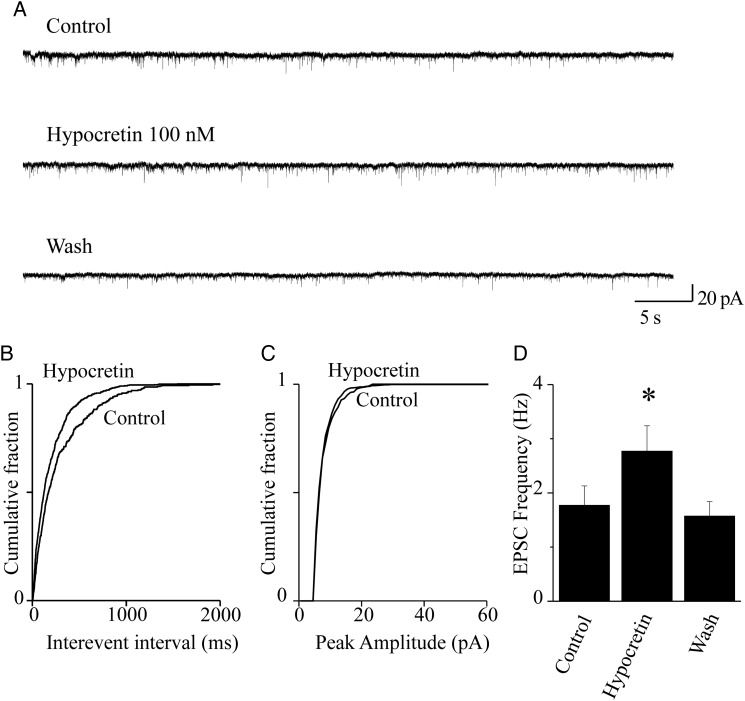Figure 2.
Hypocretin 1 stimulates glutamate release onto FS neurons. (A) Spontaneous EPSCs were recorded from FS neurons at −70 mV. Current traces represent 60-s continuous recording, before (Control), during (Hypocretin 100 nM), and after (Wash) peptide application. Hypocretin increased EPSC frequency, in a reversible way. (B) Cumulative distribution of the EPSC interevent intervals, calculated from the same experiment as in (A), in the presence or absence of hypocretin, as indicated. The peptide significantly decreased the interevent intervals (P < 0.01, with KS test). (C) Cumulative distribution of the EPSC amplitudes, in the presence or absence of hypocretin, in the same neuron. The peptide produced no significant alteration of the EPSC amplitudes (NS with KS test). (D) Hypocretin 1 produced a significant stimulatory effect in 7 of 8 neurons tested. Bars give the average EPSC frequency calculated from these cells. The plotted values were calculated from 2-min continuous recording in the indicated conditions, at the steady state. On average, the neuropeptide produced an ∼60% increase in EPSC frequency (*0.01 < P < 0.05; comparison between hypocretin and control).

